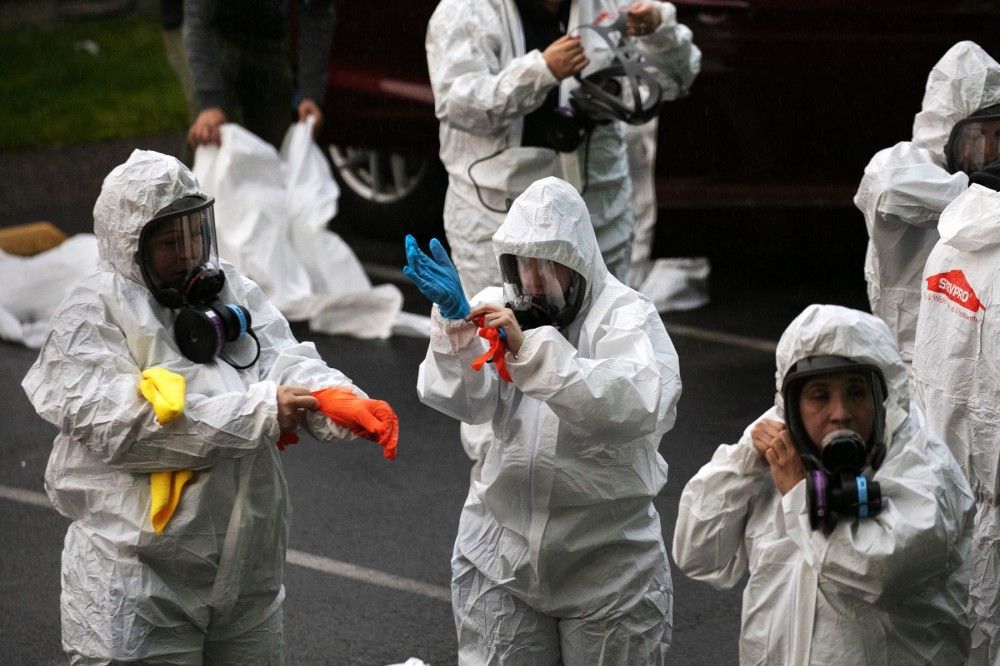
Here's How More Than 20 Infectious-Disease Experts See Coronavirus Playing Out in the U.S.
One month after the first case of the was reported in the United States, Nicholas Reich, a professor of infectious-disease modeling at the University of Massachusetts, Amherst, and Thomas McAndrew, a postdoctoral fellow at the university, started surveying their colleagues on how the virus might unfold in America.
The goal was simple: pool the opinions of the small, tightknit community of infectious-disease experts around the world who have modeled outbreaks like H1-N1, SARS, Zika, Chikungunya, and Ebola, and try to build a consensus about where COVID-19 was heading. Every Monday for the past five weeks, McAndrew and Reich sent out a list of questions to a varying list of roughly 20 other experts in the field from Johns Hopkins University, Harvard’s Chan School of Public Health, London’s Imperial College, and others.
Aggregating the forecasts of the experts’ various models, they have cobbled together a composite image of what the next several months could look like in the U.S. In the latest surveys, experts predict the coronavirus will continue to escalate through April, with hospitalizations from the virus not peaking until May, followed by a second wave of the virus arriving in the fall.
The results also indicate that experts expect a grim death toll — somewhere in the range of 195,000 deaths in the U.S. by the end of the year. (The seasonal flu, by contrast, causes between 11,000 and 95,000 deaths every year.)
That figure, while massive, is less than one-tenth the number of deaths estimated in a worst-case-scenario model from Imperial College in London — the one that reportedly spurred the Trump administration into action. That report suggested that, without intervention, the coronavirus could cost 2.2 million lives in the U.S. (One of the senior authors of that report is a participant in the expert survey.)
Reich calls the Imperial College report “one of the more comprehensive modeling efforts” of the coronavirus to have come out so far. But, he adds, “I would say that I think their ‘no intervention’ scenario is a baseline that will not come to pass given how much is already underway.” The aggregate findings of their models’ forecasts estimated the probability of an event of that scale — more than 1.5 million deaths in the U.S. — at about six percent.
“A model is just that, a model,” Reich says. “Embedded in every model are many untestable assumptions, and the Imperial College] model certainly makes many big blanket assumptions that won’t be fully 100 percent true. … There is just so much that we don’t know right now.”
An indication of just how rapidly the situation has been been changing is clear from looking back at responses to the first survey, sent out to experts five weeks ago.
That first week, McAndrew and Reich included the question, “Do you think confirmed cases of COVID-19 in the U.S. will exceed 100 by April 1?” Reich says that a large share of experts thought it wouldn’t. “Just over 60 percent of experts thought that the number of COVID-19 cases would exceed 100 by April 1 — and we’ve obviously blown past that.”
As of Thursday afternoon — still more than two weeks out from April 1 — the number of cases in the U.S. was 11,274, with more than 150 deaths, according to figures compiled by Johns Hopkins University.
“I think that this underscores the challenges that even experts face when predicting rare and uncertain events,” Reich says. “This outbreak is a black-swan event. It’s sort of this outlier, and it can be hard even for experts to accurately anticipate.”



